
This guide will give you an idea of how much you can expect to pay when getting new seamless gutters installed when accounting for removal, labor, and different gutter materials.
Tired of cleaning your gutters? Gutter guards might be your answer.


Standard screen gutter guards can last five to 10 years.
Common gutter guard types include foam, brush, and screen.
Professional gutter guard installation varies from $1,000 to $2,000.
Poorly installed guards can damage your roof.
Nobody enjoys cleaning the gutters, especially if you live in an area with heavy rains. Most people clean their gutters twice a year. However, depending on the climate and the type of trees nearby, you may need to clean your gutter as frequently as every three months. With average gutter cleaning ranging from $120 to $235 for an average home, your expenses can build up quickly over the years. As for DIY cleaning, any project involving height comes with significant risk, let alone the time and effort it would take.
In recent years, more people have turned to gutter guards either to save on regular cleaning or add an additional layer of protection against severe storms. Learn the pros and cons of gutter guards so you can decide whether they’re right for you.
When taking on this project, expect questions only a pro can answer. With our network of local pros, you'll get the job done and your questions answered—without the hassle and stress of doing it yourself.
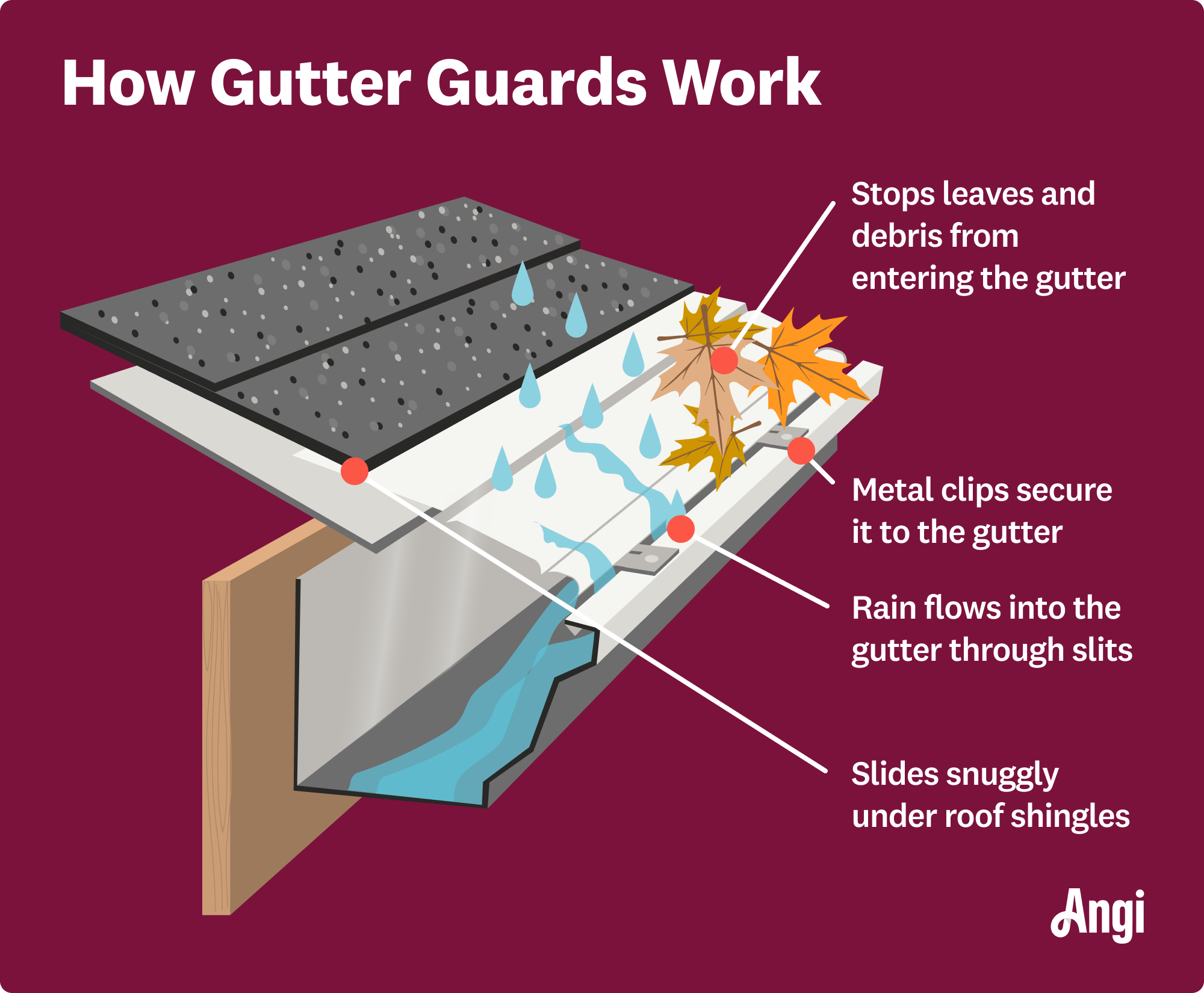
Gutter guards are a type of gutter protection system designed to prevent debris from entering your gutters. Most gutter guards add a blockage layer on your gutters or cover them up. The three popular types of gutter guards in the market are mesh, foam, and brush.
Mesh gutter guards are the most effective model. These systems use plastic or metal micro-meshes to block out most debris from entering the gutters. Plastic meshes are typically made with polyethylene or PVC, and metal meshes are often made with stainless steel.
Foam gutter guards are the most affordable option in milder climates. However, they are the easiest to install and remove. On the other hand, brush gutter guards are a medium option between foam and mesh guards. They can prevent most large debris, but the brush design may allow smaller pieces to fall through.
| Types | Pros | Cons |
|---|---|---|
| Mesh | Most durable, blocks out most debris even in heavy storms | Higher cost, requires professional installation |
| Foam | The most affordable option, easy DIY installation | Not effective in heavy rain, shorter lifespan |
| Brush | Easy installation, blocks out larger debris, relatively affordable | Small debris can pass through, high maintenance and hard-to-clean |
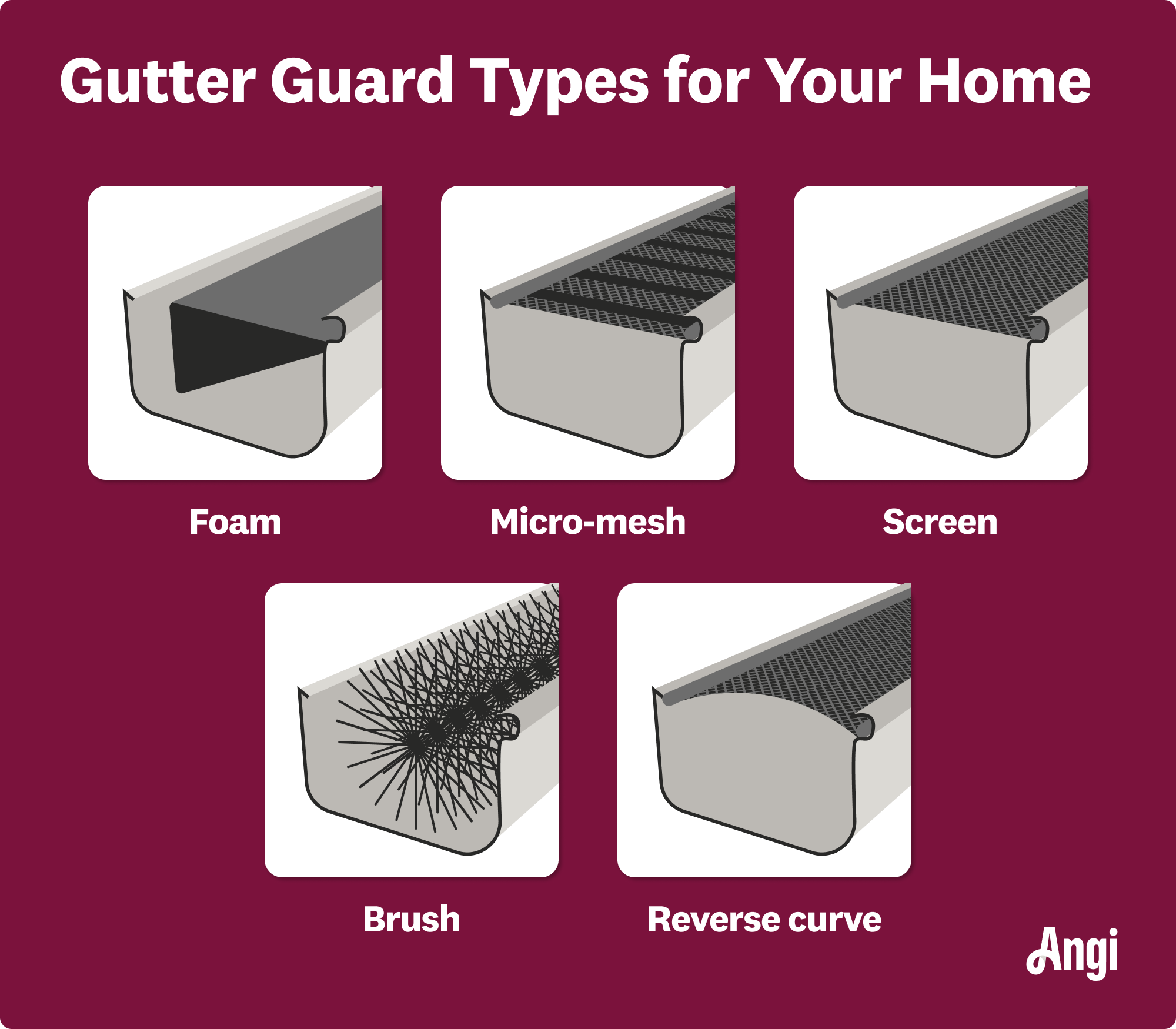
The biggest benefit of installing gutter guards is to protect your gutters and therefore extend their lifespan. By installing gutter guards, you can block out most debris, ensuring your gutter remains clear and allows water to be properly diverted. Less debris also means less cleaning which while inexpensive, is time-consuming and the costs add up over time.
Water buildup isn’t just an annoyance—it can severely damage your gutters and the roof fascia they’re attached to. Ice can clog your gutters in the winter, and if it builds up (called ice damming), it can also cause serious damage. Gutter guards should all but prevent these two problems from happening.
Gutter cleaning can be done by intrepid homeowners, but it’s not the fastest job and often involves working on ladders for extended periods of time, increasing safety risks. Regular cleaning also has the potential to damage the gutters over time, as it involves strong forces to remove debris and clogs. Gutter guards turn regular maintenance into simply regular monitoring.
You wouldn’t expect your living roof to last very long if you didn’t have a roof. Gutter guards protect your gutters from all of the common reasons gutter lifespans shorten—debris buildup, physical damage, and damage incurred during maintenance.
Gutter guards are an upfront investment and can be costly, which is the main reason some people turn them away. However, gutter guards also have a few other drawbacks.
Gutter guards may prevent large debris from entering, but some small pieces will inevitably get through. Another issue is pine needles, twigs, and seeds a tree may drop, as both can easily sneak past brushes or mesh openings, leading to a clog. These issues are not as easy to spot due to the gutter guards covering the gutter.
With a gutter guard system, it will be much harder to clean out the gutters since the system must be removed first. Therefore, once clogged, you face a more intensive project to get your gutters back up and running.
Improper installation can damage your roof and compromise its water resistance. Low-quality or poorly installed gutter guards may also void your roof’s warranty or raise problems with insurance claims, but this applies to gutters of all types. Make sure your pro is skilled and aware of your roof’s warranty before starting work.
For those wanting to go the extra mile, consider installing gutter helmets instead of gutter guards. Gutter helmets are a more extensive gutter protection system and can block out almost all debris. Surface tension gutter helmets cost $3.50 to $6.50 per linear foot and are the most expensive gutter protection system available.
Another alternative is to add additional water diversion systems since gutter guards’ main purpose is to prevent subsequent water damage caused by clogged gutters. For example, add a drain edge if your gutter doesn’t have one by default. Another effective method is rain chains, a traditional Japanese system to replace downspouts. You don’t need to worry about clogging with rain chains. They also create unique aesthetics.

Ask yourself if you truly need gutter guards. How extreme are the rain storms? Do you deal with inclement weather often? If clogged gutters have been a regular occurrence, installing some gutter guards could be a game-changer. You can only install a partial system if a specific portion of the gutters is more prone to clogging. Also, think about how cold your winters get, as that determines if you can use foam guards.
Another thing to consider is your personal goals. Do you plan on staying in this home for the long term, or are you in transition and plan to move within a year or two?
The cost of gutter guards is determined by several factors: type and material, location, and type of house. On average, gutter guard installation costs $1,125. This price can fluctuate significantly depending on material costs.
Generally, foam guards cost from $2 to $3.50 per linear foot. Brush guards cost from $3 to $4.50 per linear foot. Regular mesh guards cost from $1 to $2.75 per linear foot, and micro-mesh guards cost from $2 to $4 per linear foot.
Because faulty installations can damage your roof, we recommend you hire a professional gutter guard installation company.
From average costs to expert advice, get all the answers you need to get your job done.

This guide will give you an idea of how much you can expect to pay when getting new seamless gutters installed when accounting for removal, labor, and different gutter materials.
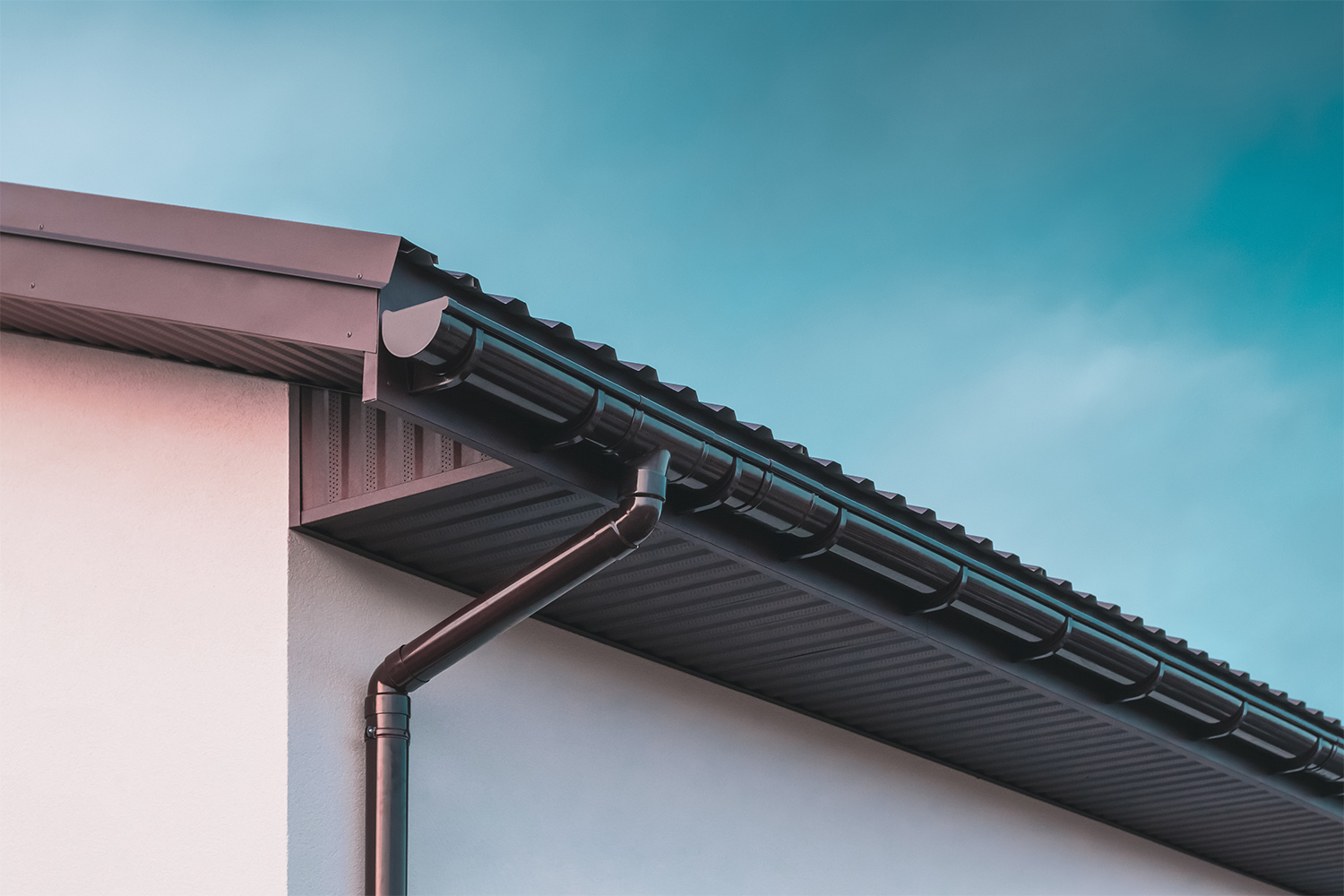
Wondering how much gutter installation costs? We’ll break down prices by material, gutter type, and other factors impacting overall gutter costs in Atlanta, GA.

Gutter repair costs may not be as high as you think—but it depends on the type of damage you're addressing. Learn why you need to hire a gutter pro for this work.
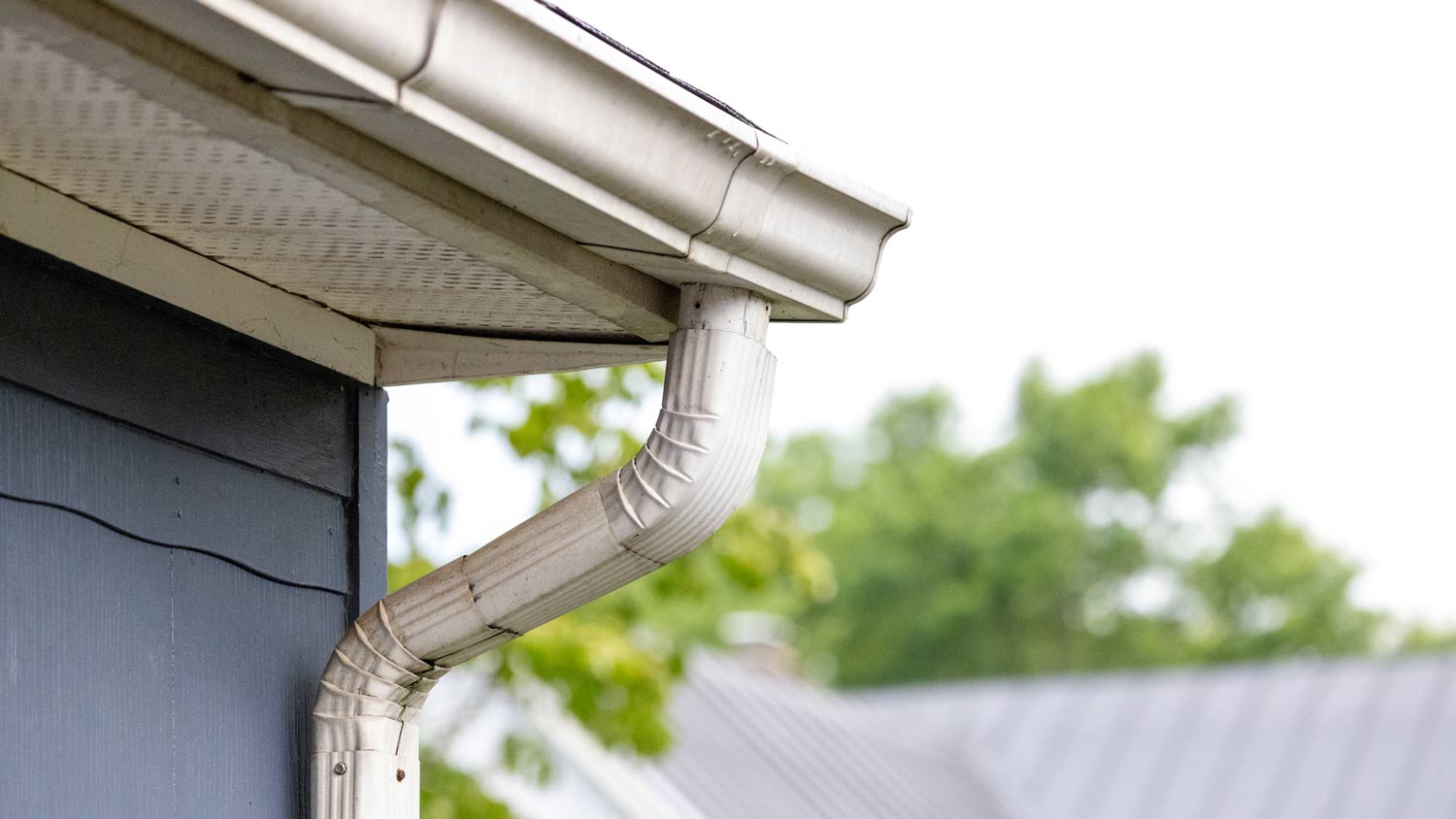
It's time to say goodbye to clogs in your gutter system. Learn how to clean a gutter downspout safely on your own in a few simple steps.
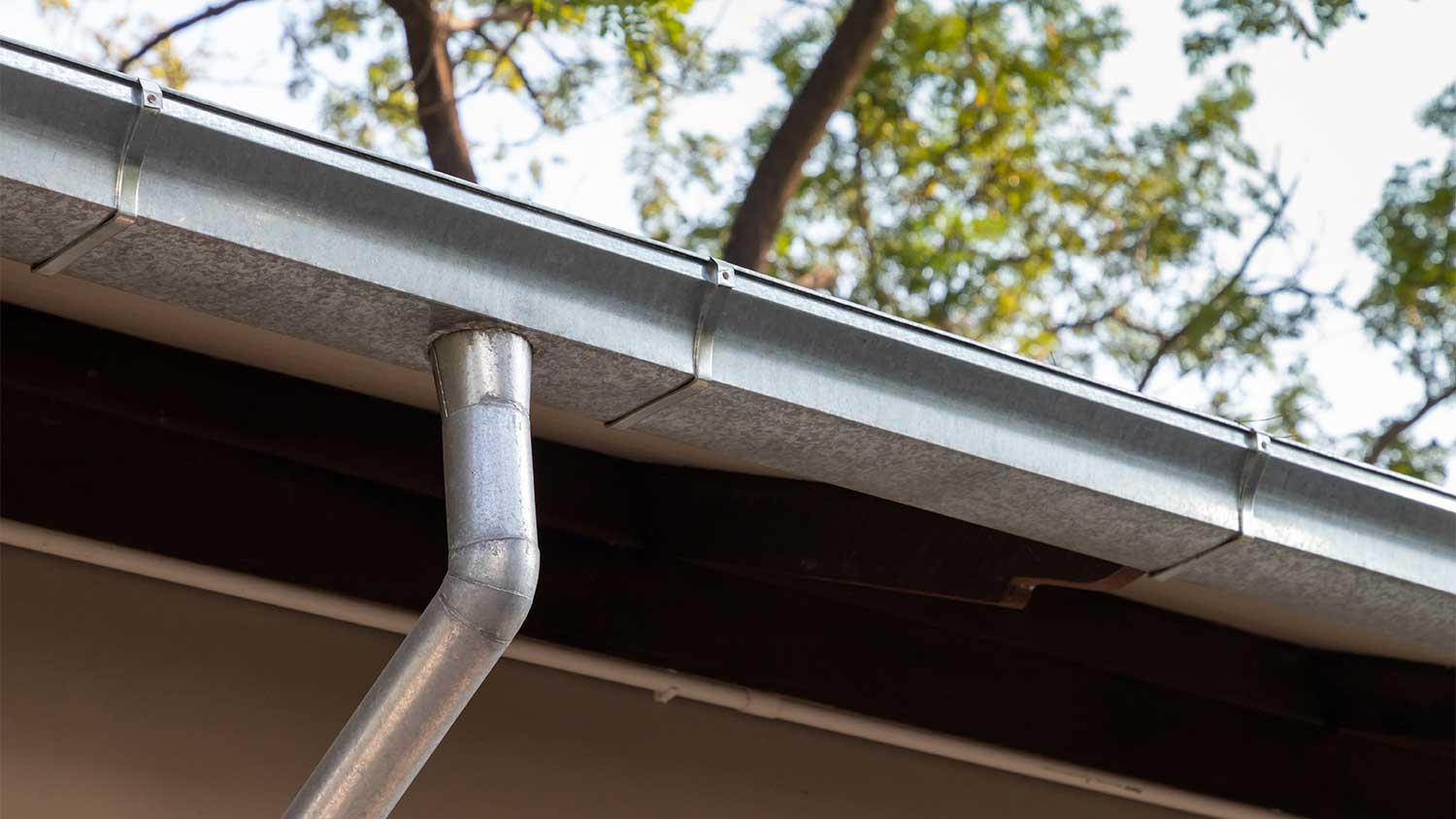
Discover galvanized steel gutters installation cost, including average prices, key cost factors, and tips to save on your gutter project.

Keeping an eye out for these warning signs can help determine whether you need new gutters. If you notice rust, cracks, or other imperfections in your gutters, it could be time to make the call.